
Senior Capstone Projects (2019-2020) |
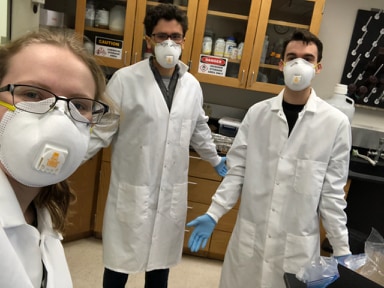 Michelle Dufficy, Eli Hersh, Adam Kaszas Skidmore’s former community garden contains unsafe lead levels and a remediation plan must be developed. We measured lead concentration in the garden at 0-10 cm and 10-20 cm. Average lead concentration was 630 ppm at 0-10 cm and 629 ppm at 10-20 cm. We recommend high-resolution mapping and selective excavation coupled with soil replacement and biostabilization. Additionally, fine-scale mapping could be used to reduce costs for other small-scale lead remediation projects. |
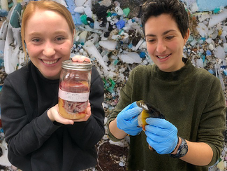 Fishing for Microplastics: Assessing microplastic ingestion by freshwater fish: A Review Stella Solasz, Kailey Toia Microplastics (MP) are becoming increasingly present in freshwater systems due to improper disposal of plastic products, leachates from landfills, and incomplete removal from wastewater treatment plants. This study examines the presence of MPs in freshwater fish intestines in the NYS Hudson Watershed. In response to Covid-19 we wrote a review aiming to harmonize methodologies, compare MP contamination in fish species, and provide parameters with GIS that aid in focusing study areas. |
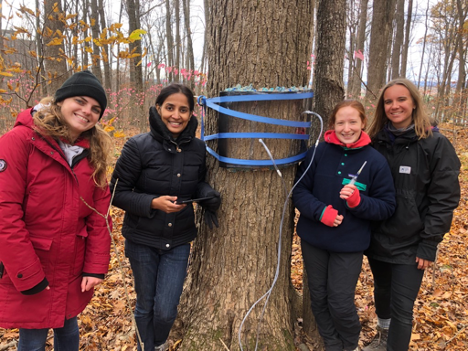 Tree Methane: A Silent but Deadly Threat Kate Bjorklund, Freddie Klaus, Zoe Pagliaro Trees are widely recognized as a globally important carbon sink. However, forest climate interactions are complex, and the relationship between forested ecosystems and methane, a potent greenhouse gas, is not well understood. Previous studies have used internal methane concentration measurements to model flux without direct evidence of linking the two. Our research investigates this relationship by comparing instantaneous stem concentrations and chamber-based stem flux measurements. Paper is not available. For information, please contact the ESS Program Director. |
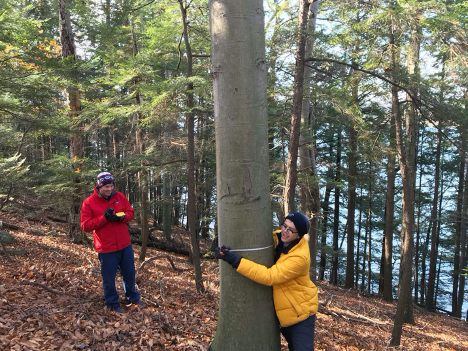 Under (and over) the dome: species distributions and aboveground-belowground relationships on an Adirondack Island Sebastian Gatton and Samuel Sheppard Forests provide numerous services to humans and the environment, but are also complex, dynamic systems subject to disturbance and heterogeneity. Geospatial techniques can be a useful tool to analyze these heterogeneous landscapes. One aspect of spatial statistics that has not been fully explored is the integration of high-resolution plant and soil data in forests. We explored how overstory tree species and soil properties were spatially correlated using aboveground point process data and belowground raster data. Paper is not available. For information, please contact the ESS Program Director. |
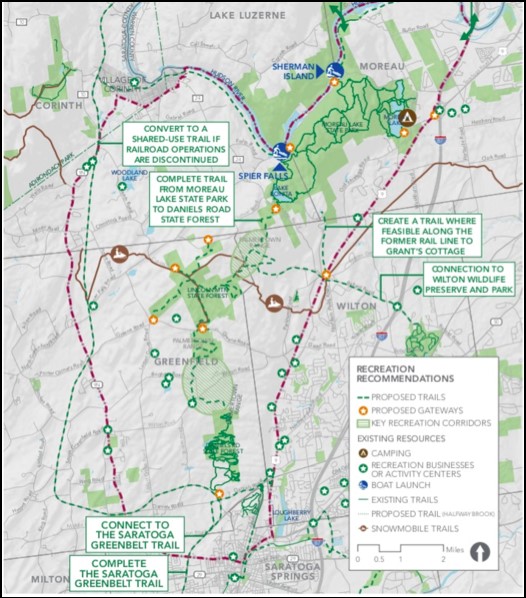 Lily Esposito, Abby Grayburn, Alana Pogostin We examined the monetary value of an expanded trail system, and the extent to which the proposed Palmertown Range Trail offers an opportunity to improve local business revenues, protect natural resources, and promote sustainable development. Saratoga County residents support the Palmertown Trail for several reasons, particularly growth in business revenues through increased tourist visits. Saratoga County residents would be willing to pay $18.83 – $19.85 annually for a trail connecting the Saratoga Greenbelt Trail to Moreau Lake State Park. |
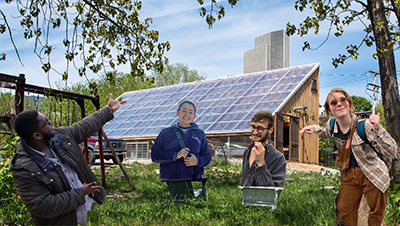 Impact & Outcomes of Environmental Education on Albany High School Students & Community Perceptions of the Radix Ecological Sustainability Center Isabel Beard, Audrey Erickson, Andy Rhodes, Brandon Wilson Radcliffe We evaluated the impacts of an after-school program at the Radix Ecological Sustainability Center on Albany, NY high schoolers participating in environmental education (EE) programming, as well as the community perceptions of Radix’s youth programs. We addressed gaps in the literature by analyzing garden based, place-based, experiential, and transformative education and environmental justice, through EE at Radix. We found positive changes in environmental understanding and life-projections for students involved in Radix programming. Paper is not available. For information, please contact the ESS Program Director. |
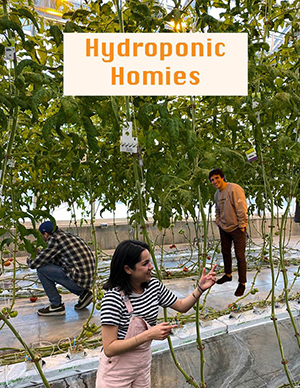 Sabrina Dabakarov, Will Borowka, and Alex Ricci Across the US, higher education institutions are realizing the benefits alternative farming on their campus. Hydroponic farming, where crops grow submerged in nutrient solution rather than soil, can reduce food miles and engage college students and their communities. We used a variety of techniques to evaluate the feasibility of a hydroponic garden at Skidmore. Hydroponics supports Skidmore’s sustainability and educational goals, and can easily be maintained and scaled up for greater future yield and profit. |
|
Grace Sowyrda Unlike fast fashion, one of the world’s largest polluters, slow fashion considers all aspects of the supply chain, including environmental and social factors. The research explored consumer and producer perceptions of the drawbacks and benefits of slow fashion in the Hudson Valley through semi-structured interviews and surveys, to help consumers understand the importance of sustainable clothing and local fiber systems that decentralize the supply chain, heal soil, and reduce waste. |
|
Anna Merrens, Mac Dill, and Nicol La Cumbre-Gibbs Sheridan Hollow has housed fossil-fuel facilities that power Empire State Plaza (ESP) in Albany, NY, for decades. In 2019, the New York Power Authority created a plan to generate approximately 50% of ESP’s electricity from renewable sources. We then created a proposal to cover ESP’s remaining electricity demand, so it could be powered by 100% green energy, in order to alleviate stress on a historical Environmental Justice community. Paper is not available. For information, please contact the ESS Program Director. |
|
Madison Collins, Maia Taylor, and Anna Tiajoloff Higher education institutions in the U.S. are expanding pollinator conservation efforts. Bee Campus institutions, certified by the Xerces Society, commit to conserving and raising awareness about pollinators, their habitats, and population declines. We used literature review, semi-structured interviews, student surveys, and bio-geospatial inquiry to evaluate Skidmore College’s potential to become a pollinator-friendly certified campus. Skidmore College would benefit from the certification, but further research is recommended. Paper is not available. For information, please contact the ESS Program Director. |
|
Isabella Gukeisen Jazmin Rendon, Olivia Glaser We investigated how food insecurity in the Capital District affects women and resource accessibility at local, regional, and federal scales. We collected data through semi-structured interviews, surveys, and observation in Saratoga and Washington counties, NY. Our findings contribute to food studies literature and activists, policymakers, and food security stakeholders by providing knowledge on food-insecure women in a focused region and providing examples that reduce food waste and expand local networks among food pantries. Paper is not available. For information, please contact the ESS Program Director. |
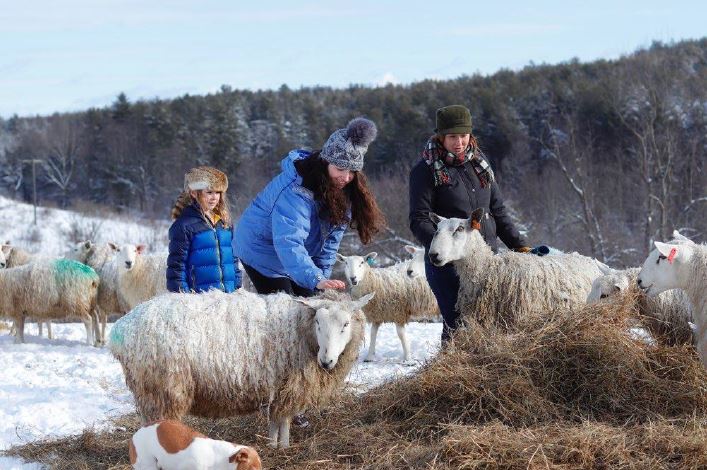
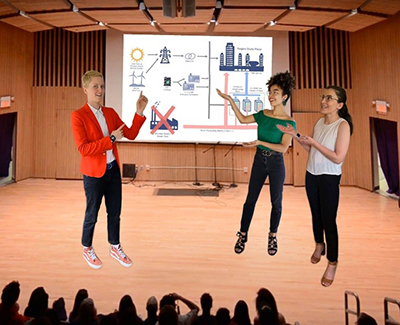 Heating, Cooling and Energizing New York’s Empire State Plaza: A Proposal for a Just
Transition to Renewable Energy
Heating, Cooling and Energizing New York’s Empire State Plaza: A Proposal for a Just
Transition to Renewable Energy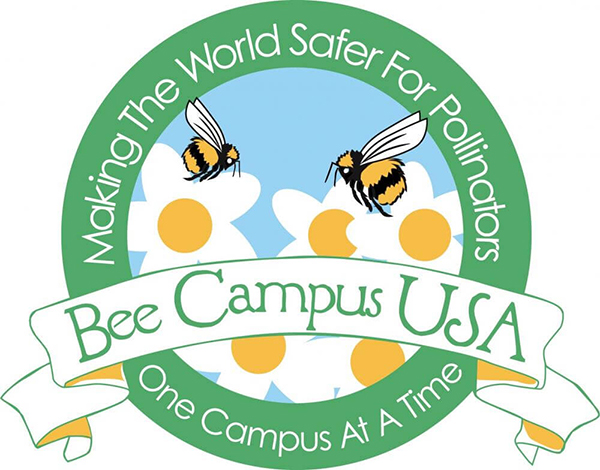 Skidmore College: Bee-ing the Change
Skidmore College: Bee-ing the Change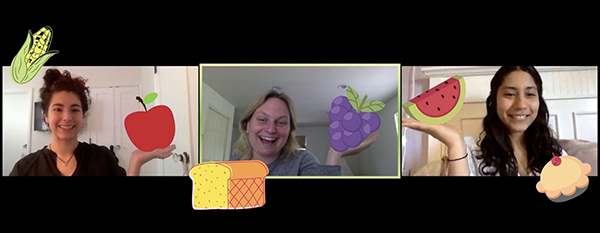 Food Insecurity Among Women and Resource Accessibility in the Capital District
Food Insecurity Among Women and Resource Accessibility in the Capital District